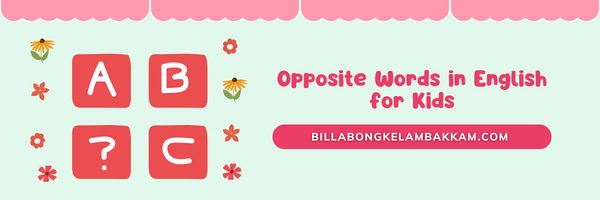
Opposite words, also known as antonyms, are an important aspect of language learning for kids. Understanding opposite words helps children to describe things more accurately and effectively, and it can also enhance their writing and speaking skills. In this blog, we will explore the importance of teaching opposite words in English to kids, and provide some tips on how to do it effectively.
Why Teach Opposite Words in English for Kids?
Opposite words play a crucial role in expanding children’s vocabulary and helping them understand the meaning of words. It also helps them to understand the concept of comparison, and makes them think critically. By learning opposite words, kids can communicate their thoughts and ideas more effectively, and improve their overall language skills.
How to Teach Opposite Words to Kids?
Teaching opposite words to kids can be fun and interactive. Games, puzzles, and flashcards are an excellent way to make learning opposite words enjoyable. You can also use real-life examples and ask children to match opposite words, such as hot and cold or big and small. Another fun way to teach opposite words is to ask children to describe the opposite of a particular word, for example, if you say “happy,” they should say “sad.”
List of Opposite Words for Kids Some common opposite words for kids include hot and cold, big and small, happy and sad, day and night, in and out, up and down. You can start with these basic opposite words and gradually introduce more advanced antonyms as children grow and develop their language skills.
Conclusion:
Teaching opposite words in English to kids is a fundamental aspect of language learning. By understanding opposite words, kids can communicate their thoughts and ideas effectively and expand their vocabulary. With fun and interactive methods, teaching opposite words can be a fun and rewarding experience for both kids and parents alike.
